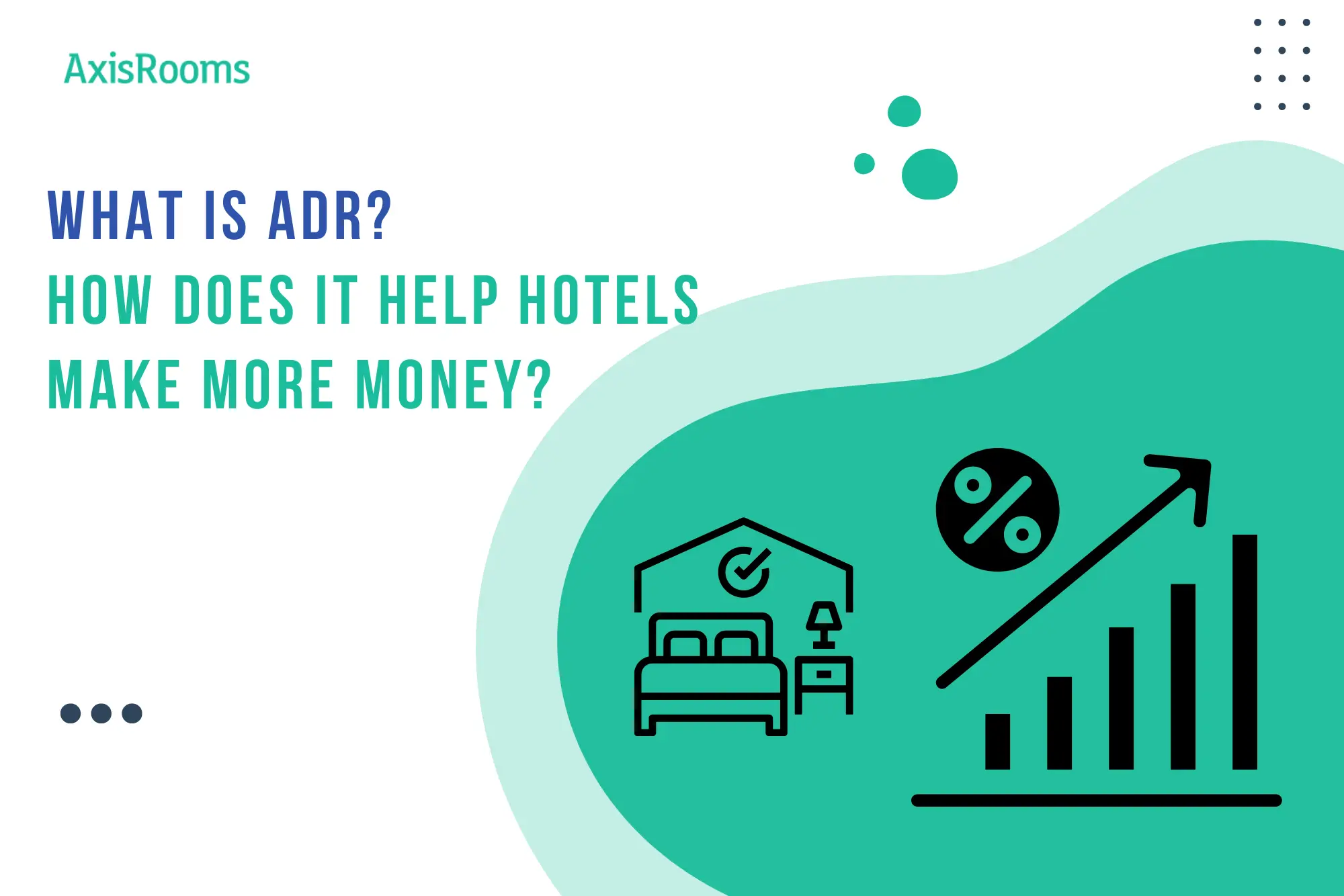In the hotel industry, tracking how much money each room makes is key to success. One measure hotels use is ADR, which stands for Average Daily Rate. This simple number shows how much a hotel earns per room daily and helps improve overall profits.
In this blog, we will explain what ADR is, why it is important, how it compares to a similar measure called ARR (Average Room Rate), and how hotels can increase their ADR.
What is ADR in the Hotel Industry?
ADR, or Average Daily Rate, tells hotels how much money they make from each room they sell every day. To find ADR, hotels divide the total room revenue by the number of rooms sold.
How to calculate the average daily rate in hotels?
ADR = Total Room Revenue / Number of Rooms Sold
Here’s a breakdown of the ADR formula:
- Total Room Revenue: This is the total income generated from selling hotel rooms over a specific period.
- Number of Rooms Sold: This refers to the total number of rooms that were actually sold during that same period. It does not include complimentary or staff-occupied rooms.
For example, if a hotel earns $6,000 in one day and sells 50 rooms, its ADR would be $120. This helps hotels see how well they’re doing in terms of pricing and profit.
Why ADR is a Key Measure in the Hotel Industry?
ADR is one of the most critical numbers hotels track because it directly affects how much money they make. A higher ADR means the hotel is earning more per room, which helps them grow profits. Monitoring ADR helps hotel managers:
- Adjust room prices based on demand.
- Track how well they’re doing over time.
- Compete with other hotels by knowing their performance.
- Create smart pricing and revenue strategies.
Difference Between ADR and ARR in Hotels
Sometimes people get confused between ADR and ARR. Here's the difference:
- ADR (Average Daily Rate) looks at how much money a hotel makes from each room it sells per day.
- ARR (Average Room Rate) checks how much money a hotel makes from all its rooms over a longer time, whether they’re sold or not.
In short, ADR focuses on what happens daily with rooms that are sold, while ARR looks at the bigger picture over a month or year, including empty rooms.
How to Increase ADR in Hotels
Here are a few ways hotels can boost their ADR:
- Upselling: Encourage guests to upgrade to better rooms or add extra services like spa treatments or room service.
- Special Deals: Create packages that include extras like meals, parking, or event tickets to raise room rates.
- Peak Season Pricing: Raise prices during busy seasons or popular events when demand is high.
- Enhancing the Guest Experience: Offer premium services and create memorable guest experiences that justify higher rates.
Factors That Affect ADR
Several factors can impact a hotel’s ADR, including:
- Location: Hotels in popular areas can charge higher prices.
- Seasonality: Rates often go up during busy seasons and drop during slower periods.
- Competition: Hotels need to watch competitors’ pricing to stay competitive.
- Room Quality: Higher-quality rooms or special features, like a great view, can be priced higher.
ADR as a Hotel KPI
ADR is more than just a number—it’s a helpful tool for making business decisions. By keeping an eye on ADR, hotel managers can:
- Set room prices based on market demand.
- See how well they’re doing compared to other hotels.
- Fine-tune their pricing strategy to get the most revenue.
This makes ADR a key metric for managing a hotel’s financial success.
ADR’s Role in Evaluating Hotel Performance
Comparing a hotel’s ADR with that of nearby competitors helps hotel managers figure out if they’re charging the right price. If a hotel’s ADR is too low, they might be missing out on revenue. If it’s too high, they could be losing guests to cheaper competitors. By understanding ADR, hotels can strike the right balance.
Average Daily Rate Hotel Statistics
ADR can be different depending on the type of hotel:
- Luxury Hotels: Luxury hotels have the highest average daily rate because they offer premium services and exclusive experiences.
- Medium size Hotels: These hotels have a medium average daily rate as they provide good service at affordable prices.
- Budget Hotels: Budget hotels often have the lowest ADR but rely on high occupancy rates to make money.
Industry Trends Affecting ADR:
- Seasonality: Hotels usually see higher ADRs during peak travel seasons.
- Location: Hotels in busy cities or tourist spots can charge more compared to those in less popular areas.
- Market Conditions: Changes in the economy or travel patterns can affect ADR, with more travel leading to higher rates.
ADR is an essential metric for hotels to track because it shows how much they’re earning from each room. By monitoring ADR and finding ways to improve it, hotels can increase their profits and stay competitive. Boosting ADR is key to long-term success in the hotel industry, whether through upselling, seasonal pricing, or offering special deals.
Read also: Hotel Data Analysis & How to Read a Report?
AxisRooms for Every Hotelier
Our Hotel Channel Manager, allows hotels to manage their rates and inventory across multiple online travel agencies (OTAs), metasearch engines, and Global Distribution Systems (GDSs) in real-time.
We pride ourselves on providing exceptional customer support and training to ensure our clients can fully leverage our technology. Our commitment to innovation has positioned us as a trusted partner in the hospitality sector, helping hotels maximize revenue and streamline operations effectively


